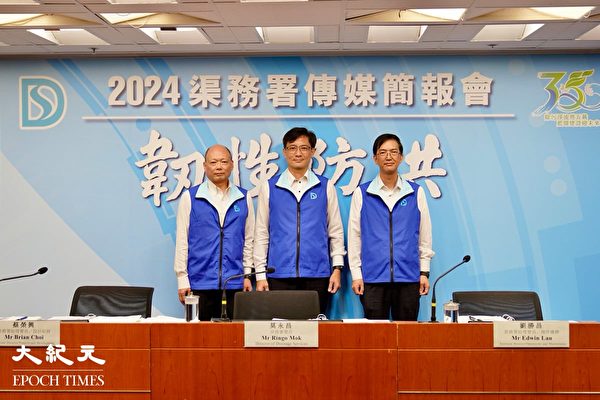Hong Kong is gearing up for the upcoming rainy season, as the Drainage Services Department held a media briefing on Thursday to explain the government’s preparation and technological applications.
According to Mo Wing Cheong, Director of the Drainage Services Department, following last year’s heavy rain experience, the authorities will strengthen emergency response efforts and utilize new technology to monitor water levels. This year, the department’s focus is on “resilient flood prevention,” reducing the risk of flooding through infrastructure projects.
In response to the heavy rain in early September last year, improvement works have been carried out across Hong Kong since September last year. This includes 120 small-scale improvement projects in flood-prone areas, such as the vicinity of Chai Wan Road where existing inlet structures were enhanced, roadside drainage channels were added, and pumping stations were upgraded.
Improvements were also made in Wong Tai Sin, including upgrading upstream rainwater inlet structures in Shatin Pass Road, some outfall drainage manholes in Wong Tai Sin Station, and the addition of drainage pipes in Lung Cheung Road, with most of the projects completed in the first quarter of this year. Additionally, 11 large-scale rainwater discharge improvement projects are currently underway, involving the construction of rainwater channels and underground storage tanks, scheduled to be completed in phases by 2030.
Mo Wing Cheong mentioned that the Drainage Services Department has reviewed and strengthened the operation of the emergency control center and response teams following last year’s heavy rains. The number of response teams has increased to a maximum of 160 teams, with operations bases expanded to 30. The response teams were effective during the red rain warnings on May 4th and 21st. The authorities have also enhanced the use of innovative technology, installing smart sensing devices in over 30 rainwater manholes in areas prone to flooding in Wong Tai Sin and Chai Wan districts to monitor water levels in the drainage systems in real-time.
Moreover, various flood prevention technologies were introduced, such as the “Weeble” spherical underground pipe inspection robot, which provides stable and clear 360-degree real-time images for drainage personnel to inspect pipe conditions accurately and schedule repairs promptly. Another tool showcased was the lemon-shaped buoyant water level sensor device called “Lemon Check” that can be installed in manholes to monitor water levels.
Mo Wing Cheong also mentioned plans to pilot an artificial intelligence system in Yuen Long and Tsim Sha Tsui this year to analyze street images in real-time, identify flooding situations, and dispatch response teams promptly.

